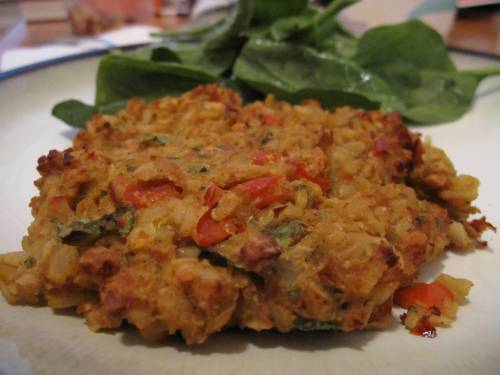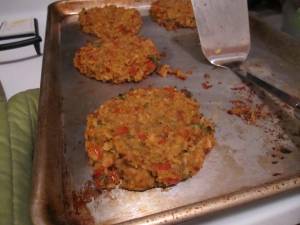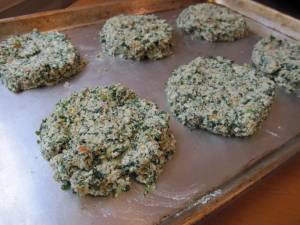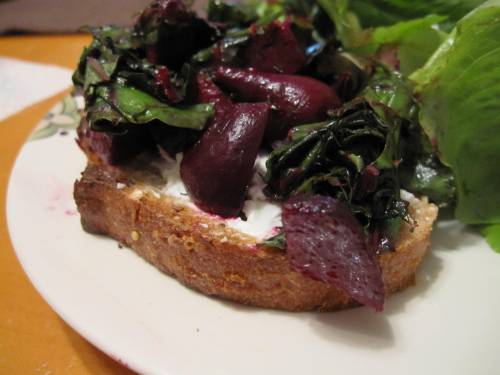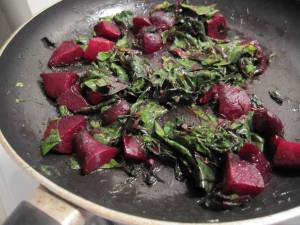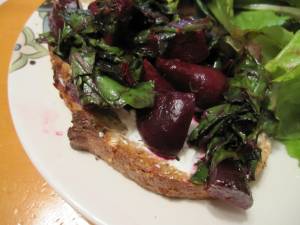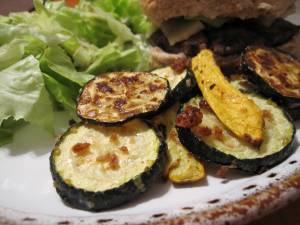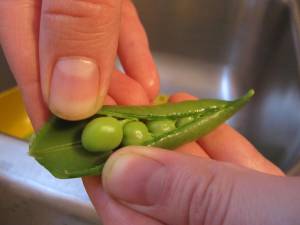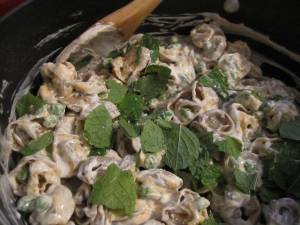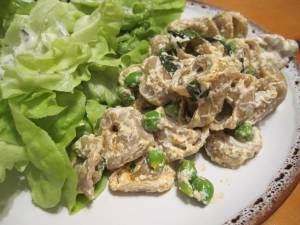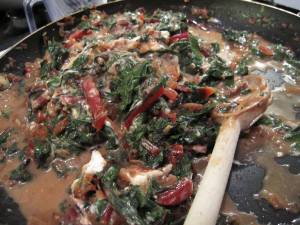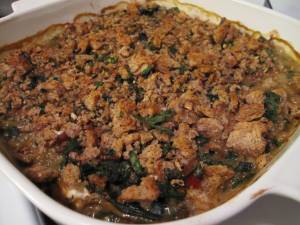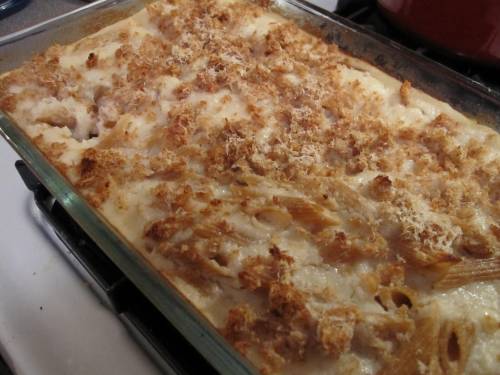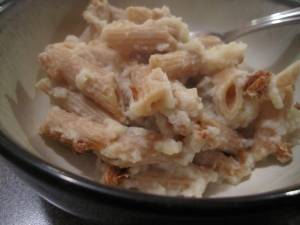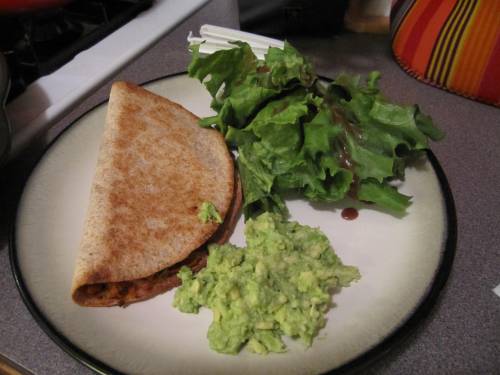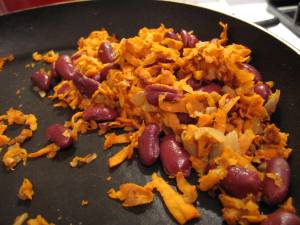This is the second post of “burger” week – and these red lentil curried burgers are home more on a plate with some plain yogurt and lettuce than in a bun. These are definitely more flavorful than the spinach-tofu burgers, and consequently, aren’t a good match for traditional condiments. Like the other burgers, these require cooked brown rice, so keep that in mind when planning these burgers.
As you will notice, this recipe, like the last one, is from the cookbook, Moosewood Restaurant Cooking for Health. I love this book. Unlike some of the earlier books from the Moosewood collection, the ingredients are pared down somewhat (though it may not look that way form the ingredient list below). Everything is flavorful, the recipes are straightforward, and everything I’ve made so far has been tasty and healthful. The book contains all vegetarian and vegan recipes and is great for those wanting to learn more about cooking without or with less meat. I recommend it!
“Red Lentil Curried Burgers”, from Moosewood Restaurant Cooking for Health
1 c. dried red lentils
2 c. water
1/2 t. ground turmeric
1 1/2 c. chopped onions (about 1 medium)
3 garlic cloves, minced
2 T. olive oil
1/2 c. diced celery
1 c. diced red bell pepper
1 T. grated, peeled, ginger
1 T. curry powder
1/2 t. cinnamon
2 c. cooked brown rice
3/4 c. finely chopped roasted peanuts
1 T. lemon juice
1/2 c. finely chopped cilantro
Preheat oven to 400 degrees.
Rinse and drain the lentils. Put them in a small saucepan with the water and bring to a boil while stirring often. Add turmeric and 1/2 t. of the salt. Reduce the heat to low, cove, and simmer until lentils are soft and have absorbed the water. This will take about 20 minutes. Because red lentils can burn easily, make sure to reduce the heat to low and stir occasionally. If there is any liquid left and the lentils are fully cooked, drain the liquid.
While the lentils are cooking, heat the oil in a medium skillet over medium heat. Cook the onions and garlic until softened about 6 minutes. Stir in the celery and bell peppers. Cook for another 7 minutes. Reduce the heat and cover the pan, or add some water to prevent sticking, only if needed. Add the ginger, curry powder, cinnamon, rest of the salt, and cook for a minute, stirring constantly. Remove from the heat, add the rice, nuts, lemon juice, cilantro, and lentils. Mix well.
When mixture is cool enough to handle, shape into 6 patties using about 1/2 cup for each. Place on an oiled baking sheet and bake for about 20 minutes.
